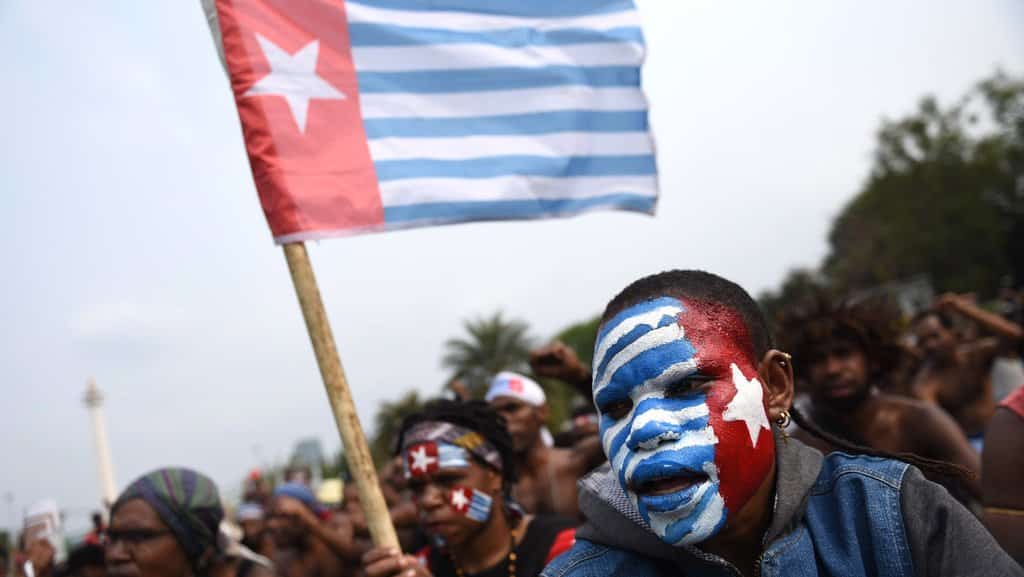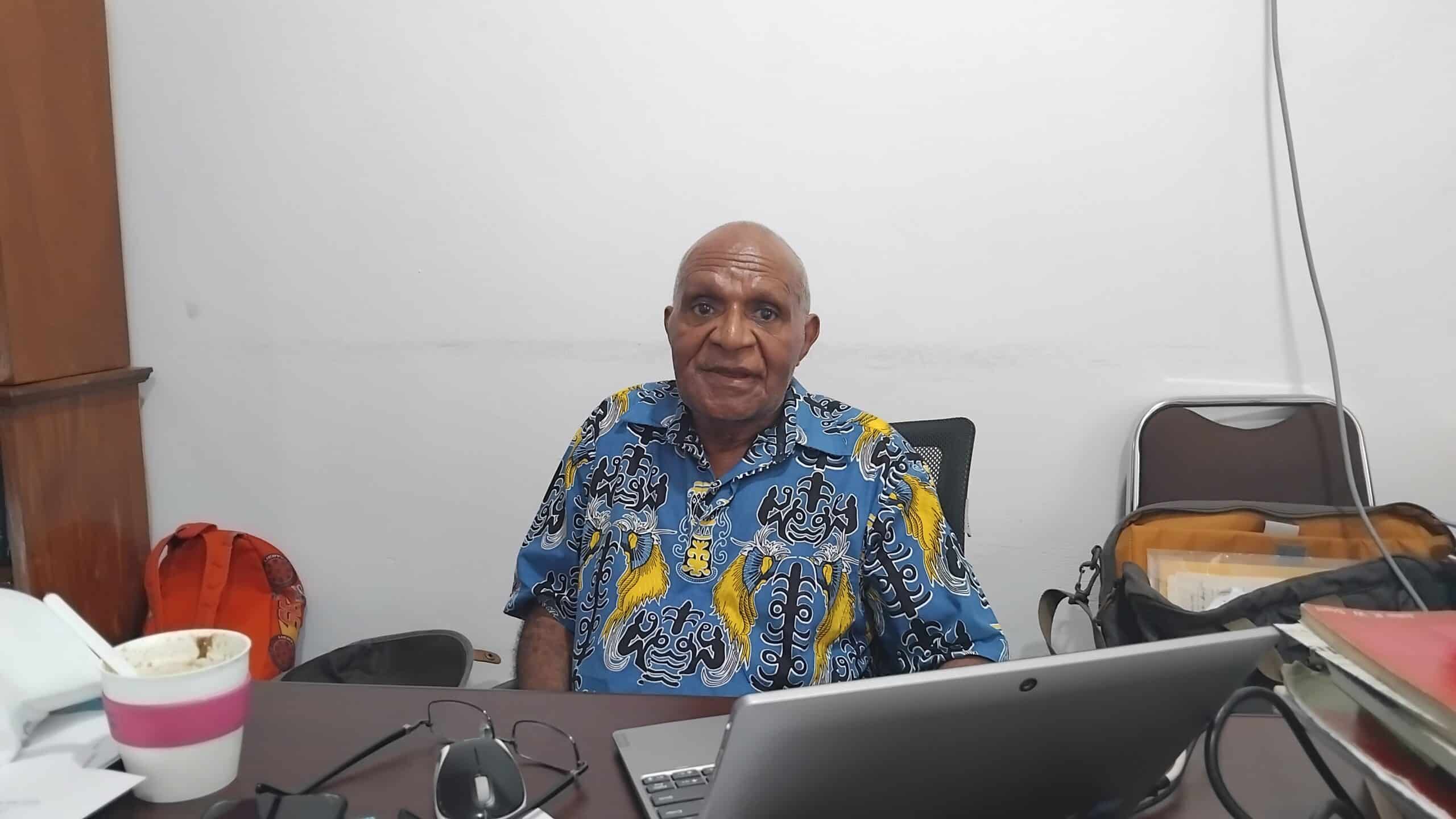Jakarta, Jubi – The discussion held by rights NGO Imparsial, which invited a number of experts, community leaders, and peacemakers earlier this week revealed that development was not the answer to ending conflict and establishing peace in Papua. The tool to achieve peace is the dialogue between stakeholders and society.
In various discussions about the conflict in Papua, poverty is often in the spotlight because it is believed to be one of the root causes of the problem. However, oftentimes, poverty is also understood narrowly as a lack of infrastructure in Papua. The government has been disbursing trillions of rupiah to build various kinds of infrastructure such as bridges, roads, schools, hospitals, airports, markets, stadiums, cross-border posts, and ports.
These infrastructures are expected to boost economic activity in Papua so that it can reduce poverty, improve people’s welfare, and finally, realize peace in the Land of Papua. But this assumption misses that the root problem of the Papua conflict is not only poverty. Studies by researchers have shown the root cause was not only economic but also political, social, legal, and cultural.
The complexity of the roots of the Papua conflict needs to be acknowledged together so that efforts to create peace in Papua no longer rely on infrastructure development but consider other factors beyond that.
Irine Morada Santiago, a peace negotiator from the Philippines, said at the Imparsial’s discussion on Monday, April 18, 2022, that many parties misunderstood development as a tool for bringing about peace. “Development is not peace, and peace is not development,” she said.
Peacebuilding (efforts to create peace), said Irine, was a process that aimed to increase connectors and reduce dividers so that development can take place. Meanwhile, development is a process of increasing capacity and reducing the vulnerability experienced by the community.
Development must also be understood as an effort to expand access and increase the choices that can be made by the community in continuing to live and determine their own destiny. In practice, development and peacebuilding often intersect. However, this situation should not be a justification that development is the only way to bring about peace.
“You must have a clear understanding of definitions, theories, and plans to bring about peace in conflict areas,” said Irine Santiago who has more than 20 years of experience helping resolve conflicts in the Philippines.
Delsy Ronnie, a researcher who focuses on studying conflict resolution, asked the government to re-evaluate what kind of development has been going on in Papua. Because there are indeed types of development that actually exacerbate conflict and do not contribute to efforts to create peace.
Ronnie, who has experience being involved in conflict resolution in Aceh, said that development must strengthen people’s trust in the government. If the development is not able to build public trust, the physical buildings will not contribute much to efforts to bring about peace in Papua.
Several types of development that have the potential to exacerbate tensions include infrastructure development that does not benefit the local community, services that strengthen discriminatory practices, programs that support violence, and infrastructure development protested by the community.
On the other hand, the type of development that contributes positively to peacebuilding is the strengthening of health services, education, and other public services that include communities affected by conflict, members of the pro-independence group, and other minority groups. Ronnie calls it a transformative development.
Head of the Papua Peace Network Rev. John Bunay echoed Irine and Ronnie, saying that physical development in Papua had proven unsuccessful in helping to create peace. John Bunay said that there was still a growing sentiment in the community that the bridges and roads built were not for the welfare of the indigenous Papuans but for the interests of the business elite. There is also an assumption that the economic activities of the business elite are not in line with the values of the Papuan people who want to care for and preserve the environment as a natural part of their life.
John Bunay said Papuans need improvement in education, health and the economy, but these are the second step. The first step, John Bunay said, is for the government to conduct a dialogue with the people and map out problems at the grassroots. He also proposed to President Joko Widodo to form a special team consisting of members of the Papuan People’s Assembly (MRP). The special team will work together with religious leaders, traditional leaders, and local community leaders to hear the needs and aspirations of the indigenous Papuans.
He believes the only way to achieve lasting peace in Papua is through dialogue. However, dialogue is only possible if decision-makers in Jakarta listen to the aspirations and wishes of the Papuan people.
Irine reminded us that oftentimes, the government thought about complex strategies to create peace while in fact, the first and urgent step needed was to open up space for the community to voice their aspirations and needs considering that they have been silent so far due to violence and prolonged conflict.
Irine recounted her experience while trying to build peace in Davao, a city in Mindanao that has been stuck in a conflict between rebels and the military for decades. The first step at that time was to open a channel for complaints in the community and to increase the space for dialogue at the grassroots level. That way, the government immediately knew there were two problems that needed to be resolved as soon as possible, namely fear and hunger.
The people feel they are trapped between two conflicting parties, namely the rebels and the military. Irine’s party could do nothing with the rebels so they talked to the military. The battalion commander at that time supported the government’s peace movement and they no longer showed a cold and harsh face but were friendly to the people.
The soldiers, said Irine, treated the residents with respect as they passed the guard post, no schools and houses were burned, the soldiers also helped the community rebuild houses and schools. Within a few months, after the military was no longer harsh on the people, their food needs were met, and their voices were heard by the government, people’s trust in the military and government grew. Slowly, the rebel group lost influence.
“We had a history of 50 years of conflict, but in nine months it was over. The rebels tried to return, but the community chased them away. So, in my opinion, a rebellion cannot grow without the support of the people,” said Irine Santiago.
With this experience, she suggested that efforts to create peace in Papua must also go through small steps that target people at the grassroots. There must be a dialogue between the government and influential people in the Papuan community, then more dialogues to reach more people from various walks of life in Papua. The more people participating in the dialogue, the better. (*)





